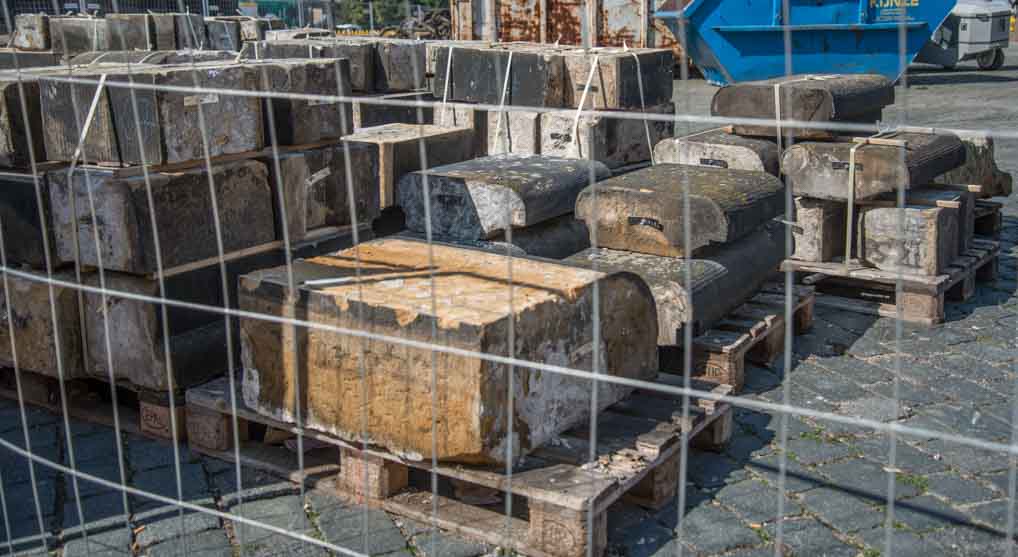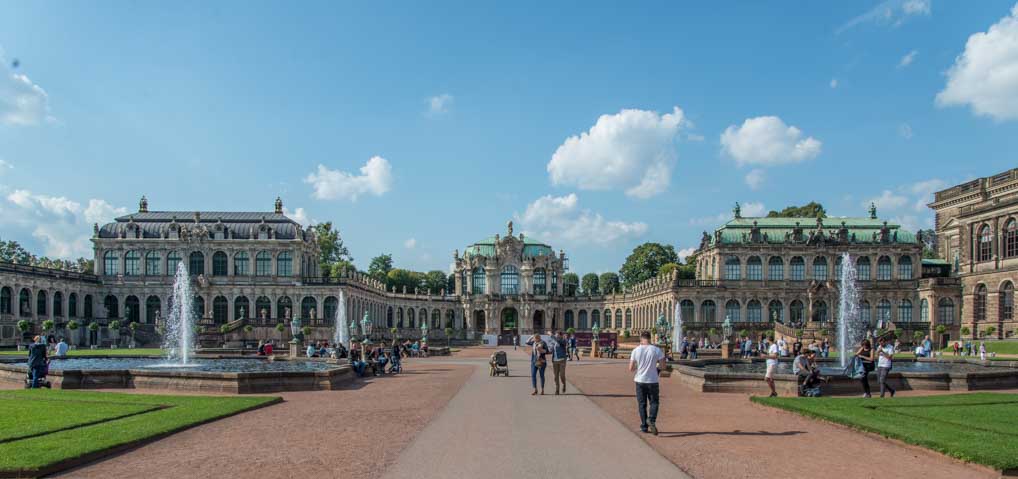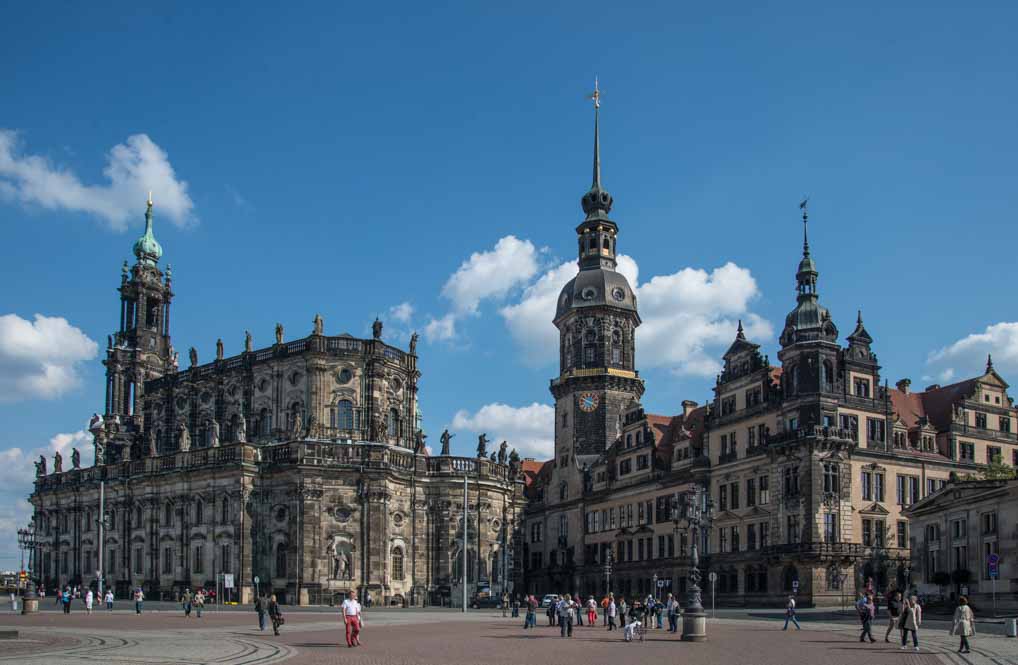Team Basil resisted the temptation of an Indian meal and sat ourselves down at the Rough Guide recommended Am Hundewinkel. The owner, who waited on us, spoke excellent English and explained that their food was not German, but Austrian! Close enough We both had a starter and main course which were absolutely enormous and by the end we were both full to bursting point. The food was excellent and we can thoroughly recommend it.
It also gave us an insight into recommendations in guidebooks. This restaurant was recommended in our Rough Guide to Germany which we bought about 15 months ago. The owner of the restaurant explained that they had only been running the restaurant for less than a year and before that it had been closed for two years! Fortunately for us the new iteration is still great.
Our journey to Dresden was only 14 miles and passed without incident. We parked up on one of the several Stellplatz set up by Dresden for motorhomers (51.044350, 13.744126). Our Stellplatz is €14 for 24 hours, with electricity extra. There are also full facilities for emptying and filling but they costs extra too. It is only about 500 metres from the old town, so ideally situated. It is, of course, full of motorhomes bringing money into the Dresden economy, so it’s win win.
Dresden was historically one of the most culturally rich of German cities, with Electors of Saxony, in particular Augustus the Strong, who was also King of Poland, building some of the most magnificent Baroque buildings in Europe. As most people will know nearly all of this was destroyed in bombing raids by the British and Americans in early 1945 and the firestorm that followed. In addition between 20,000 and 30,000 people were killed.

Stones from buildings destroyed in the war. All numbered and ready to be used.
After the war the East German authorities did little to restore the city and in fact cleared areas of architectural importance to make way for their modern city plans. The icon of Dresden, the Church of Our Lady was just left as a heap of rubble for 40 years, for all to see either as, depending who’s telling the story, an implied criticism of the capitalist West who had carried out the bombing, or as a warning against war.

The main Protestant Church in Dresden – The Church of Our Lady. It can accomodate a congregation of 3000.
Following German re-unification most of the major buildings have been magnificently restored, using as much as possible of the original materials. The streets in the old town have been reconstructed in line with the old street plan with the houses and shops being built using modern techniques but with replica baroque facades.

Zwinger – Essentially Pleasure Gardens built by Augustus the Strong to entertain the nobility.
We chose to see the city with a walking tour. This time it was not free, but the €12 charge was much the same as we would give as a tip at the end of a free tour. Our tour guide was University College London Graduate, who grew up in Dresden, spoke excellent English and was an entertaining and knowledgeable group leader.

Part of a huge mural depicting all the rulers of Saxony made from Meissen porcelain tiles. This section shows Augustus the Strong and his son.
As we walked amongst the old buildings: the Cathedral, Church of our Lady, Opera House, Palace, pleasure gardens and others, we were given an introduction to Dresden’s history in particular regarding Augustus the Strong; details of the controversial bombing in a balanced way; and information about the reconstruction.

Elector’s Palace on the right and Roman Catholic Cathedral on the left
We had a thoroughly enjoyable day and the restored monumental buildings are magnificent. It is not possible for a layman to tell that they have been rebuilt. In some ways Dresden is strangely less attractive, in my eyes than the smaller German towns we have been looking round. The big squares, broad boulevards and enormous monumental buildings give the city a less intimate feel.

The Opera House
For those who visit Dresden for more than a day, and without dogs, there are also some world class museums and art galleries in the city and I could easily see Dresden fully occupying a long weekend.
We retreated back to Basil in the late afternoon and have not yet decided whether we will push on to Prague tomorrow or instead have a day or two relaxing on a campsite before we tackle Prague.
